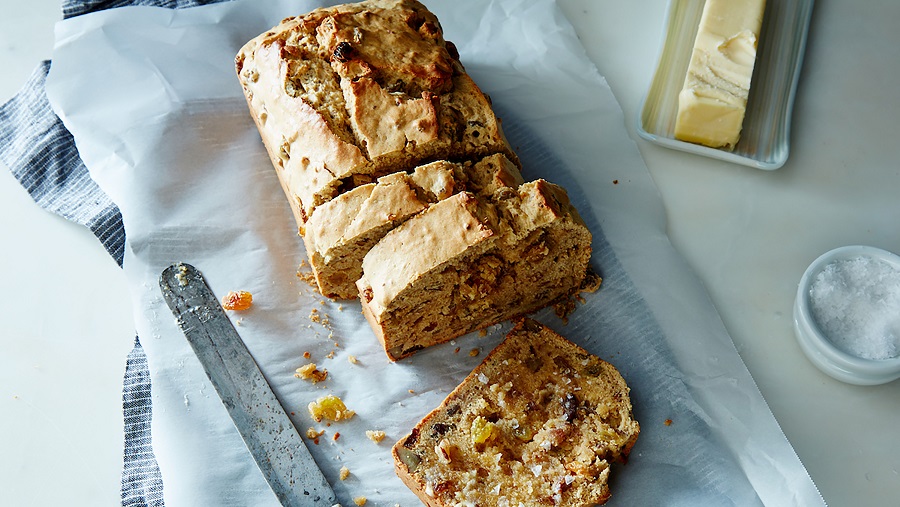In the US, election cake is a centuries-old tradition. It had become more obscure in recent years, but since Sunday, it saw an increase in Google searches.
Why? It has become the baking project of choice for those not looking to go doomscrolling on Election Day.
The recipe for Hartford election cake appeared in Amelia Simmons’ “American Cookery,” published in 1796 — the first known cookbook written by an American in the United States — though there are mentions of the recipe predating the Declaration of Independence.
The story of the cake goes as follows: In early spring, elections for governor and other offices were held in towns around Connecticut, and in May, representatives from around the colony gathered for the ballot counting in Hartford, an event that often ran long into the night.
It seems fitting, then, during the 2020 presidential race, when a final vote count by the end of the night seems highly unlikely, to revive the tradition of the election cake.
Reporter Marian Burros brought the story and recipe to The Times in 1988, adapting the cake from “The Fannie Farmer Baking Book” by Marion Cunningham. The recipe starts with a yeasted dough, studded with raisins and pecans, and spiced with cinnamon, cloves, nutmeg and mace. The finished texture falls somewhere between a panettone and a dense fruitcake. (The earliest election cakes are said to have weighed as much as 12 pounds, according to the New England Historical Society.)
This cake is also designed to keep well, a strong selling point for this particular election. It’ll serve you from Tuesday evening (with a stiff cocktail) through to Wednesday morning (with a coffee), and you can snack on it for the rest of the week.
The recipe
Yield: 2 cakes
2/3 cup (160 milliliters) warm water
2 packages (4 1/2 teaspoons/13 grams) active dry yeast
3 2/3 cups (470 grams) plus 1 tablespoon all-purpose flour
1 cup (225 grams) unsalted butter (2 sticks), softened, plus more for greasing pans
2 eggs, beaten
2 cups (200 grams) firmly packed light brown sugar
1 cup (240 milliliters) buttermilk
1 teaspoon baking soda
2 teaspoons ground cinnamon
1/2 teaspoon ground cloves
1/2 teaspoon mace
1/2 teaspoon ground nutmeg
1 teaspoon salt
1 1/3 cups (220 grams) raisins
1 cup (110 grams) chopped pecans
1. Pour the warm water into a large bowl and sprinkle the yeast on top. Stir, then let stand for 5 minutes to dissolve.
2. Add 1 cup (130 grams) of the flour and beat until well blended. (The mixture will be quite stiff.) Add the butter and beat until smooth. Add the remaining 2 2/3 cups (340 grams) flour, plus the eggs, light brown sugar, buttermilk, baking soda, spices and salt; beat for 3 minutes.
3. In a small bowl, toss the raisins and pecans with the remaining 1 tablespoon flour until coated, then stir them into the batter until distributed.
4. Using butter, grease two 8 1/2-by-4 1/2-inch loaf pans. Divide the batter evenly between both pans, then cover loosely with towel and let rest for 1 1/2 hours.
5. Heat oven to 350 degrees. Bake the cakes until a toothpick inserted into the center tests clean, about 1 hour or up to 1 1/4 hours. Remove from oven and let cool in the pan for 5 minutes. Turn the cakes out onto a wire rack and let cool completely before slicing and serving.
Give it a try?
New York Times News Service










